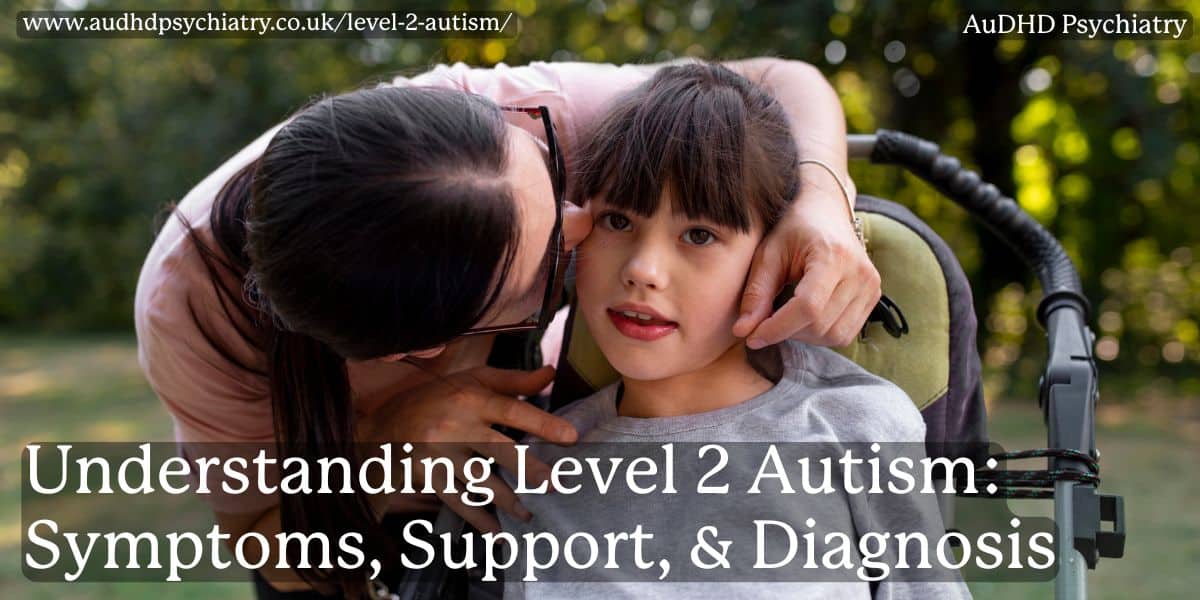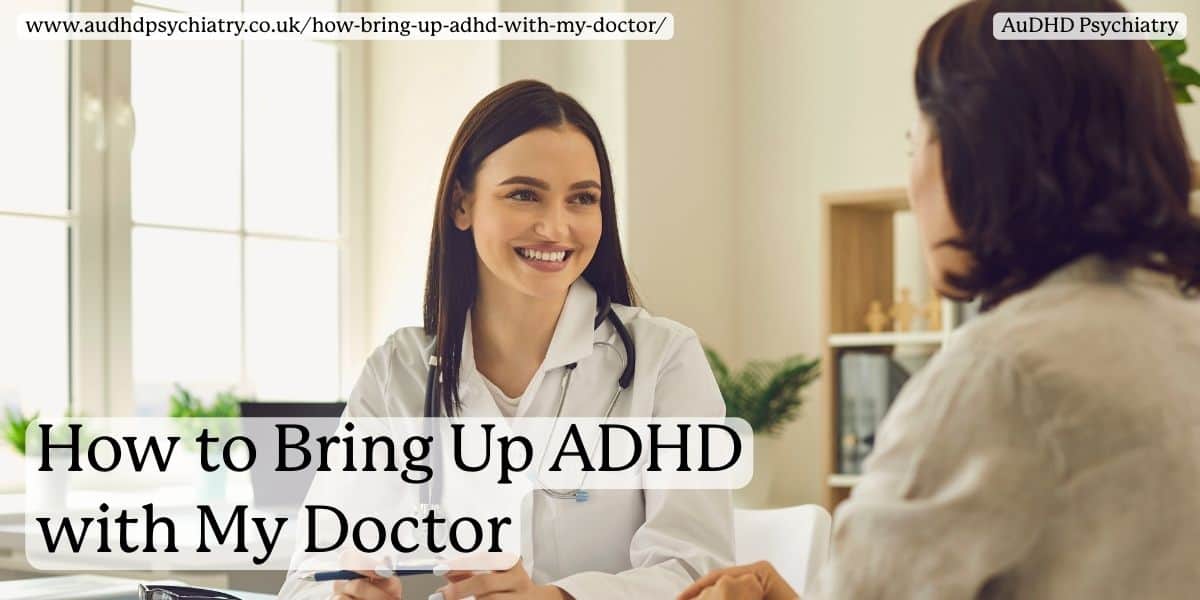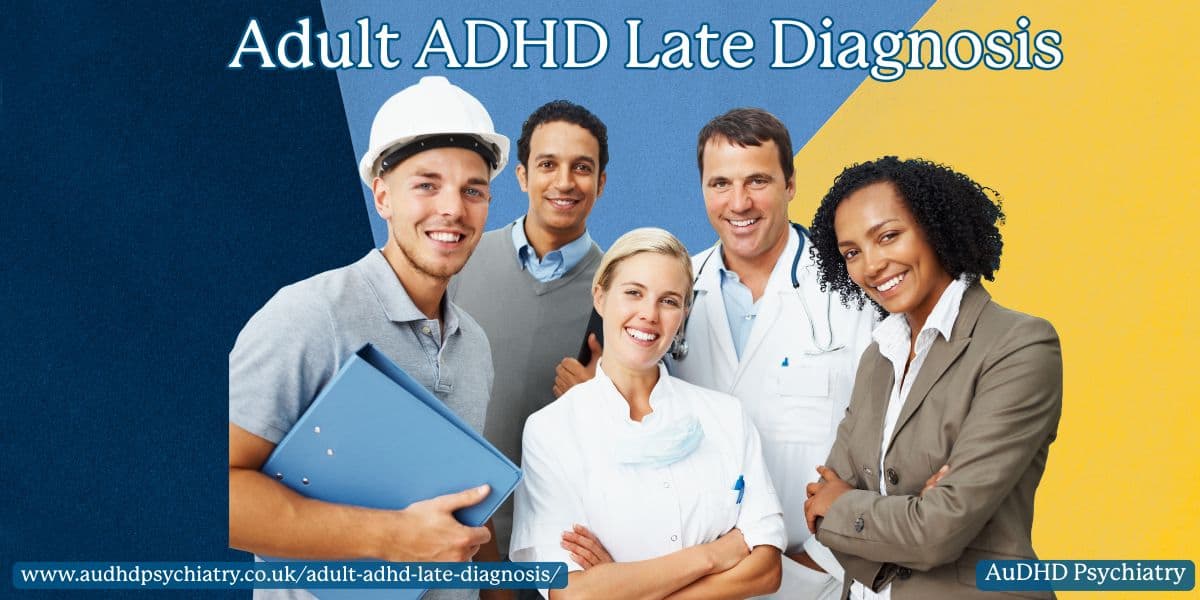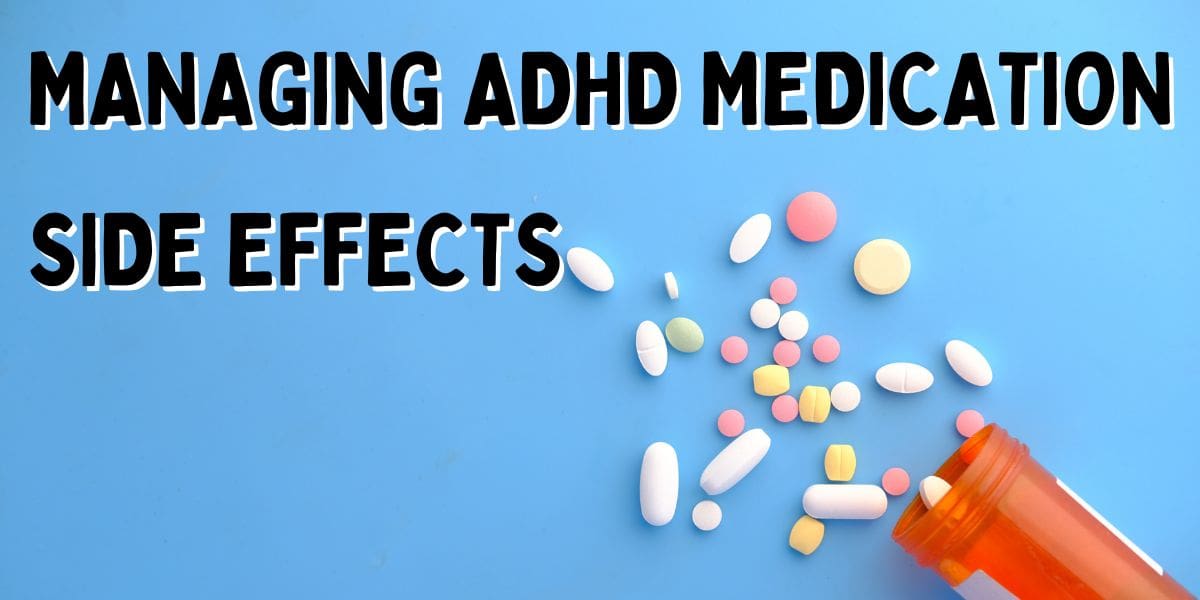
ADHD medication can be life-changing – but not always in the way you expect. While medication can significantly improve focus and daily functioning, side effects are a common concern, particularly during the start of treatment or medication dose adjustment. For many individuals, these side effects may include sleep disturbances, appetite changes, mood shifts, or physical discomfort such as headaches or nausea.
This article outlines why these reactions occur, how long they typically last, and what can be done to manage them effectively. It also explores the differences between stimulant and non-stimulant medications, as well as when side effects may signal that the current treatment is not well-suited to the individual.
If you, a loved one, or your child is experiencing challenges with ADHD medication, understanding the possible side effects and available solutions is essential. The right approach and medical guidance can reduce discomfort and achieve a more stable, effective treatment plan.
Managing ADHD Medication Side Effects: What You Should Know
Side effects are common, often manageable
Side effects are not uncommon when starting or adjusting ADHD medication. While many individuals respond well to treatment, others may experience unwanted reactions that interfere with daily life. These can include disrupted sleep, loss of appetite, irritability, headaches, or other physical symptoms. Addressing these effects early is essential to ensure the treatment remains both effective and tolerable.
Attention Deficit Hyperactivity Disorder (ADHD) medication side effects can often be minimised with the right support and adjustments. In many cases, these issues do not mean the medication is unsuitable, but rather that the dose or timing needs refinement. Adults may notice different reactions compared to children, and personal health history, coexisting conditions, and lifestyle factors can all influence the way a medication is processed by the body.
Monitoring side effects in adults
For adults, managing ADHD medication side effects often involves careful observation, tracking patterns over time, and ongoing communication with a healthcare provider. This process helps determine whether a side effect is likely to fade with continued use, or if it signals the need for a dosage change or alternative treatment.
An effective ADHD treatment plan strikes a balance between improving focus, impulse control, and daily functioning while avoiding persistent discomfort. Healthcare professionals typically begin administering medication with a low dose and increase gradually: a process known as titration, to limit adverse reactions and assess how the individual responds. If side effects persist or symptoms worsen, AuDHD assessment services can help determine the best course of action.
Regular reviews make a difference
Ultimately, managing ADHD medication side effects is a collaborative process. Regular reviews with your prescribing clinician help ensure the current treatment continues to meet your needs. In some cases, non-pharmacological strategies or adjustments to sleep, diet, or stress management may also support better outcomes. When addressed early, most side effects can be reduced or resolved without compromising the effectiveness of ADHD treatment.
If you have already completed an ADHD assessment and are ready to begin treatment, our specialist ADHD medication service for adults provides safe prescribing, dose monitoring, and ongoing support.
Why Do ADHD Medication Side Effects Happen?
ADHD medications affect brain chemistry in ways that improve attention, reduce impulsivity, and support overall functioning. However, these changes can also lead to temporary or ongoing side effects. Understanding why this occurs is an important step in managing the treatment process effectively.
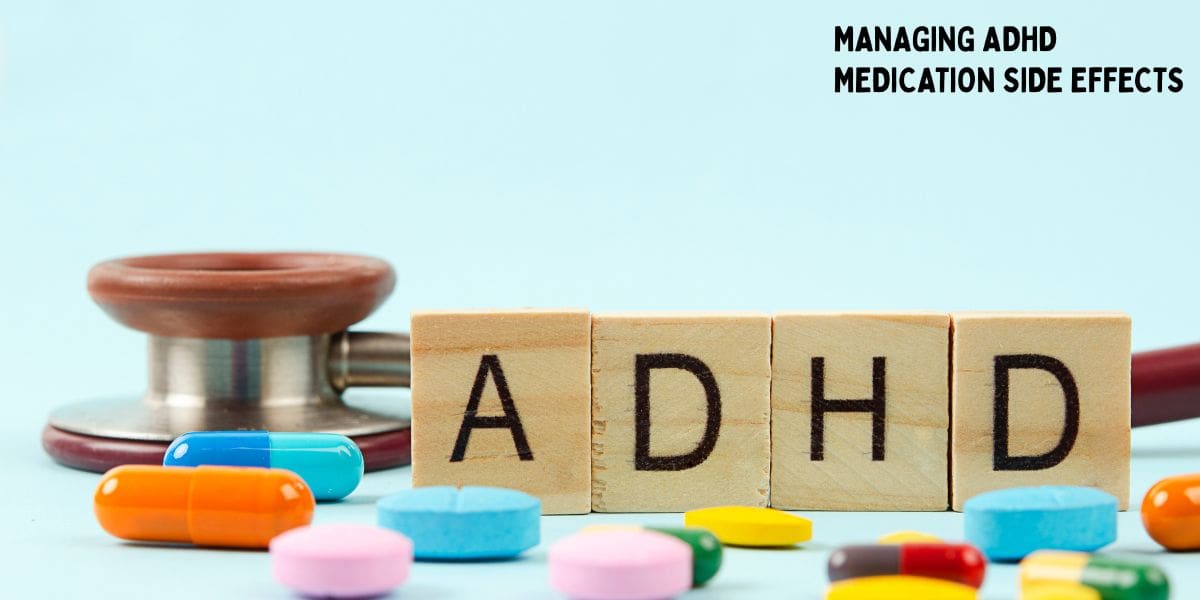
How does ADHD medication work?
Most ADHD medicines work by influencing neurotransmitters such as dopamine and norepinephrine. These are chemicals involved in regulating attention, motivation, and emotional responses. Stimulant medications, including methylphenidate and amphetamines, increase the availability or levels of these neurotransmitters in specific areas of the brain. This can lead to clearer thinking and reduced hyperactivity, but it can also cause appetite suppression, mood changes, or sleep difficulties as the body adjusts.
How stimulant and non-stimulant medications differ
Non-stimulant medications work differently. Instead of directly increasing dopamine levels, they often target norepinephrine through different mechanisms. For example, atomoxetine is a prescribed non-stimulant that is a selective norepinephrine reuptake inhibitor. These medicines may be better tolerated by individuals who experience strong side effects with stimulants or who have coexisting conditions that make stimulant use less suitable.
Individual responses vary
Several factors contribute to how side effects develop. These include the dosage of the medication, how quickly it is absorbed or released in the body, and the individual’s age, metabolism, and medical history. Children, for example, may be more sensitive to changes in appetite or growth patterns, while adults may experience increased anxiety or cardiovascular effects.
Finding the right fit
The type of ADHD medication prescribed, whether stimulant or non-stimulant, also plays a role in the side effect profile. Each has its own benefits and limitations, and the decision to use one over the other should always warrant a discussion with a healthcare provider. By understanding the underlying mechanisms of such treatments, patients and families are equipped to make more informed decisions and manage side effects more effectively.
Common Side Effects of ADHD Medication
Although ADHD medication can improve concentration and reduce impulsivity, it often comes with side effects, particularly during the early stages of treatment or after a dose change. These reactions vary depending on the type of medication, dosage, and how the body processes the drug. While many side effects are temporary, some may persist without careful management.
Our next discussions outline the most common side effects of ADHD medication in both adults and children, alongside practical insights into what to expect and when to seek further support.
Appetite Suppression and Weight Loss
One of the most reported side effects is a noticeable reduction in appetite. Stimulant medications, especially those containing methylphenidate or amphetamines, can reduce hunger cues by affecting areas of the brain that regulate appetite.
For children, this may lead to slower weight gain or weight loss over time. In adults, decreased appetite may not be immediately concerning but can result in insufficient calorie intake and low energy levels.
Nutrient-dense meals, offered at times when appetite is strongest (often early morning or evening), may help reduce the impact. In some cases, dose timing can be adjusted to allow for proper nutrition without compromising symptom control.
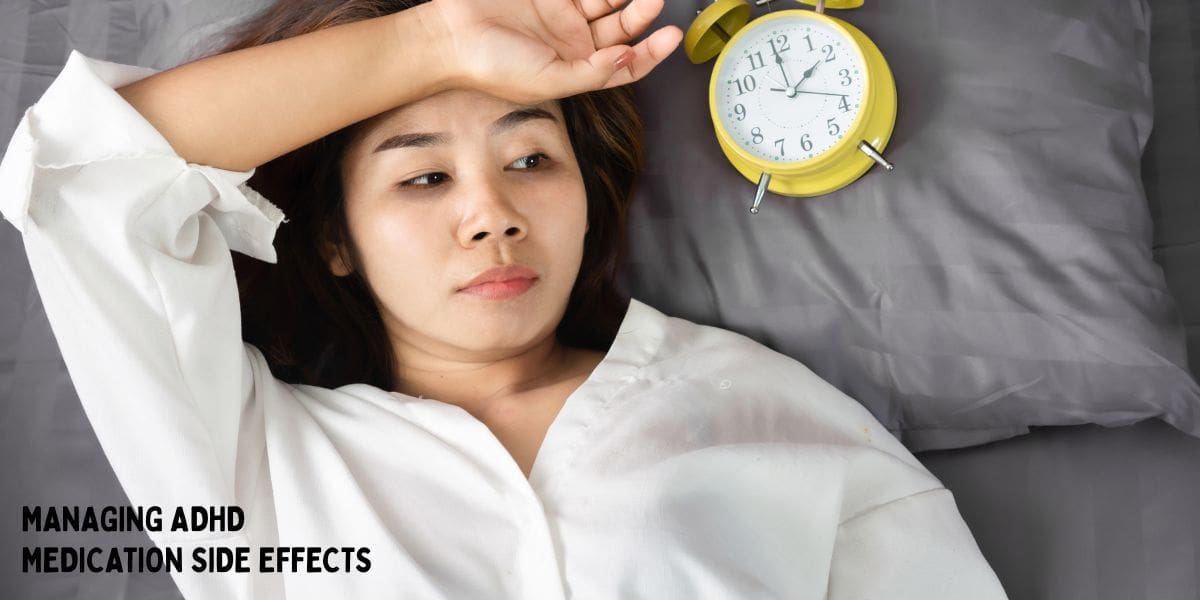
Sleep Issues and Insomnia
Sleep disturbances are another common concern, especially when stimulant medication is taken too late in the day. Many individuals report difficulty falling asleep or frequent night waking, particularly with extended-release formulas that remain active well into the evening.
Sleep problems can affect both adults and young people. Establishing a regular bedtime routine, avoiding screen exposure before sleep, and discussing medication timing with your prescriber may improve sleep quality. In some cases, switching to a short-acting preparation taken earlier in the day can reduce disruption to sleep.
Headaches, Dizziness, and Nausea
Headaches and mild dizziness may occur during the initial adjustment period. These side effects are usually short-lived but can be uncomfortable enough to interfere with daily activities. Nausea may also appear, especially if the medication is taken on an empty stomach.
Adults often tolerate these symptoms better, though they still require monitoring. Ensuring proper hydration and taking medication with food (where advised) may help ease discomfort. If symptoms persist, the dose may need to be reviewed.
Dry mouth is another related effect, particularly in stimulant medications. Carrying water or sugar-free lozenges can offer relief.
Mood Swings and Irritability
Mood changes, for example, increased anxiety, irritability, or emotional sensitivity, are among the potential side effects experienced by both children and adults. These reactions may stem from the medication’s influence on neurotransmitters or could indicate that the current dose is not the right fit.
Tracking behaviour changes and discussing them with a healthcare provider is essential. If mood changes are ongoing, it may suggest that the medication is too strong, is wearing off too quickly, or is interacting with other conditions. Adjusting the dose or considering a non-stimulant option may help in such cases.
Rebound Effects and the “Concerta Crash”
Some individuals experience a phenomenon known as the rebound effect, where symptoms such as hyperactivity, irritability, or sadness emerge as the medication wears off. This can be particularly noticeable with immediate-release tablets or with long-acting formulas such as Concerta.
The so-called “Concerta crash” can feel like a sudden emotional or physical drop-off. If rebound effects are frequent, strategies such as dose splitting or supplementing with a short-acting medication later in the day may help smooth the transition.
Tics and Involuntary Movements
Stimulant medicines have been associated with the onset or worsening of motor tics in a small percentage of individuals. These movements are usually temporary and may decrease over time. However, for individuals with coexisting conditions such as Tourette’s syndrome, stimulant use requires careful monitoring.
In such cases, non-stimulant medications or behavioural therapy may be considered as alternatives, depending on the severity of the tics and their impact on daily life.
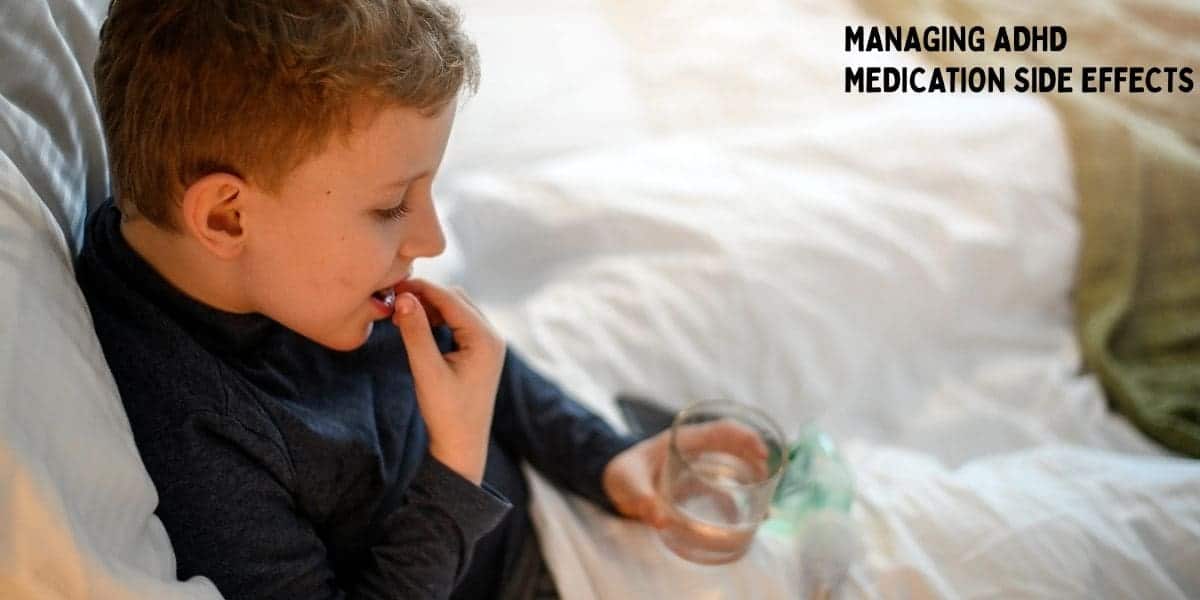
Delayed Growth in Children
In children, particularly those taking stimulant medications for long periods, slowed growth in height and weight can occur. This is often due to chronic appetite suppression and insufficient calorie intake.
Paediatricians should closely monitor methylphenidate side effects in children. Growth charts and regular weight checks are standard in long-term ADHD treatment. In some cases, medication holidays or switching formulations may be discussed to support physical development while maintaining symptom control.
For further assistance and information on ADHD treatment or assessment for children, read our article on Private ADHD Child Assessment.
Cardiac Risks and Rare Side Effects
Though uncommon, ADHD medications can cause cardiovascular side effects such as increased heart rate, high blood pressure, or, in very rare instances, more serious events, including sudden cardiac issues. These adverse side effects are more likely in individuals with pre-existing heart conditions.
Before starting treatment, a thorough medical assessment should include questions about heart health and family history. Ongoing monitoring is recommended, particularly if symptoms such as chest pain, palpitations, or fainting occur.
Severe reactions are rare, but any sudden or concerning physical symptoms should be reported immediately to a healthcare provider. If you’re an adult and the side effects are impacting your work, here’s our guide on How to Manage ADHD in the Workplace.
How Long Do ADHD Medication Side Effects Last?
Understanding short-term vs long-term effects
Many side effects of ADHD medication occur in the early stages of treatment, particularly during dose titration. Short-term effects such as headaches, nausea, and decreased appetite typically appear within the first few days of starting a new medication or raising the dosage. These often subside within one to two weeks as the body adjusts.
Long-term side effects are less common but may emerge with continued use, particularly in children. These include delayed growth, sleep disturbances, or ongoing emotional sensitivity. If these effects persist beyond the initial adjustment period, a review with your prescribing clinician is advised.
The role of titration and dose adjustment
During the titration phase, the dose is gradually increased to find the lowest effective amount. This helps lower the risk of adverse effects while improving symptom control. However, even with a slow increase, some individuals may experience strong reactions that warrant further adjustment or switching medication types.
Another concern that may arise during this process is the current ADHD Medication shortage. Collaborating with your clinician about working around supply challenges is crucial.
Practical Ways to Minimise ADHD Medication Side Effects
Minimising ADHD medication side effects often begins with a low dose of a stimulant medicine and gradual adjustments. This titration process allows the body time to adapt while helping clinicians assess tolerance and effectiveness. Skipping this phase or making large dose changes quickly can lead to unnecessary discomfort or reduced efficacy.
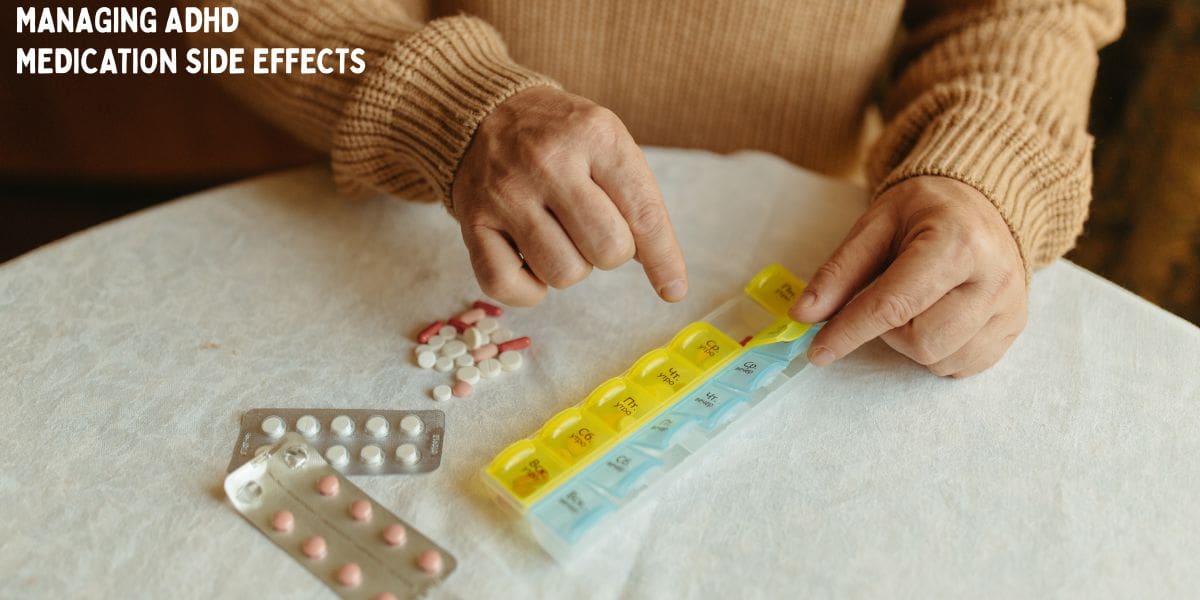
Timing medication correctly
Side effects are often influenced by when the medication is taken. Stimulants taken too late in the day may disrupt sleep, while others may wear off too early, causing a rebound in symptoms. Keeping to a consistent medication schedule, which means taking medication at the same time each day, helps manage both effectiveness and side effect patterns.
Longer-acting medications can offer more stable coverage with fewer dips, but short-acting options may provide more control over timing in certain cases. Always consult your prescriber before making changes to timing or formulations.
Supporting the body through hydration, diet, and sleep
Sleep hygiene, hydration, and balanced nutrition all play a role in managing medication-related side effects. A lack of fluid intake may worsen dry mouth and headaches, while poor sleep can heighten emotional sensitivity.
Nutrient-rich foods offered when appetite is at its peak help mitigate weight loss or poor nutrient absorption. For practical hydration tips and lifestyle strategies, see our dedicated article on Hydration and ADHD.
Adults vs children: different needs, same approach
Children and young people may struggle more with appetite suppression and growth concerns, while adults more commonly report sleep and mood-related side effects. Parents may also find it harder to identify subtle symptoms in children. In both cases, structured support systems and regular reviews are essential.
Targeted Solutions for Specific Side Effects
Appetite suppression
If appetite is reduced, schedule meals during times when hunger tends to return – typically before the medication fully takes effect or after it wears off. Offering high-calorie, nutrient-dense meals can help children maintain healthy weight gain. Smoothies, overnight oats, and nut-based snacks are good options.
Insomnia and disrupted sleep
Avoid stimulants later in the day, and discuss extended-release options if symptoms wear off too early. A relaxing pre-sleep routine, limited screen use, and consistent bedtime can improve sleep quality. If sleep problems persist, a formulation change may be needed.
Mood swings and rebound symptoms
Track emotional changes and when they occur. These may indicate that the dose is too high or that the medication is wearing off unevenly. In some cases, a non-stimulant alternative or adjusting the dose may be helpful. It is also worth reviewing lifestyle stressors and coexisting mental health conditions with your provider.
If symptoms return abruptly after the medication wears off, it may be a rebound effect. Strategies include splitting doses, switching to a longer-acting medication, or layering a short-acting option in the afternoon.
Signs ADHD Medication May Need Adjusting
It can take time to find the right dose of medication for ADHD. However, there are certain signs ADHD medication dose too high, or that the formulation is not well-matched to your needs. Red flags to watch for include excessive irritability, mood swings, restlessness, or feeling “flat” or emotionally blunted.
Adults may notice increased anxiety, overfocus, or a sense of unease. Children might become withdrawn, overly quiet, or unusually tearful. In both cases, these may reflect that the dose of medication is more than the brain can comfortably process. It may be worth considering an ADHD medication dose adjustment.
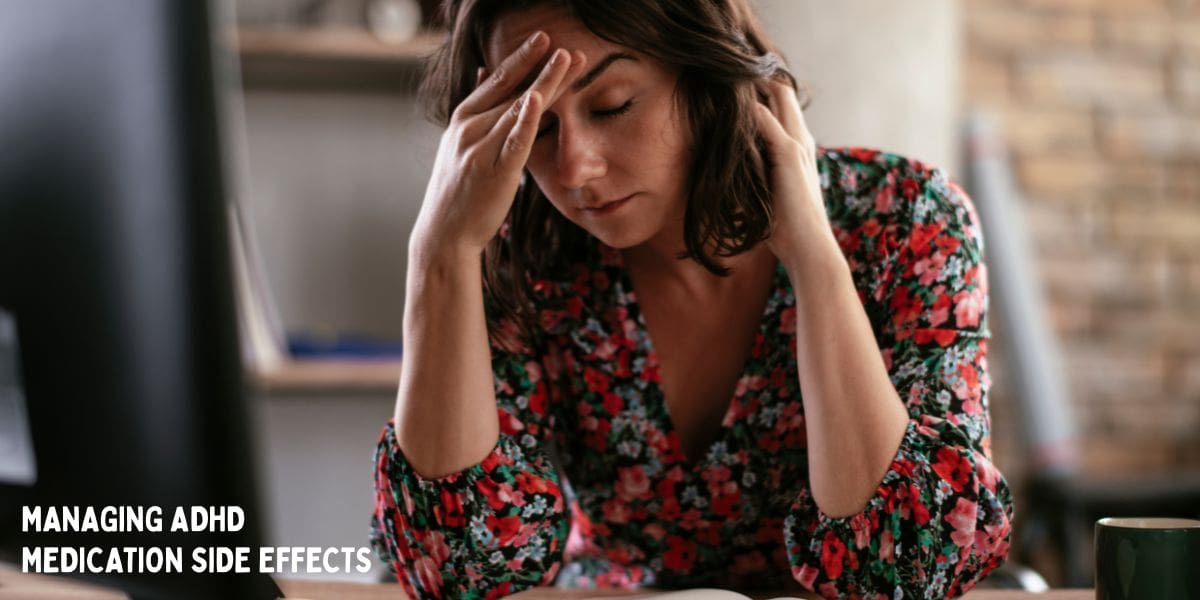
Common physical indicators
Physical side effects such as headaches, nausea, increased heart rate, or insomnia may also point to a dose that is too high. Some people may feel their thoughts are racing, even though the medication is intended to slow and regulate attention. If these symptoms persist beyond the titration period, seeking a review is important.
Summary checklist: Signs your ADHD medication needs adjusting
- Irritability or mood swings not present before treatment
- Feeling overly anxious or tense
- Difficulty sleeping despite early dose timing
- Loss of appetite to the point of fatigue or weight loss
- Headaches or increased heart rate
- Emotional numbing or feeling less like yourself
- “Wearing off” symptoms that return too strongly or too soon
The right dose should support focus and daily functioning without causing discomfort or emotional disruption. If any of these signs appear regularly, speak with your healthcare provider. A small dose reduction or a change in the formulation may lead to better results with fewer side effects.
What to Do If Side Effects Persist
Persistent side effects can be discouraging, but they do not always mean the medication has to be discontinued. With medical guidance, there are multiple ways to address ongoing issues while keeping symptoms of ADHD under control.
When to seek medical advice
If a side effect worsens, does not improve after several weeks, or significantly impacts quality of life, a dose reassessment is appropriate. Some individuals may also experience a medication rebound, where symptoms intensify as the dose wears off, indicating that the timing or formulation needs to be revised.
Regular follow-up appointments during the first few months of treatment are essential to monitor for long-term side effects and support dosage decisions. For information on finding appropriate support, you can refer to our list of top private ADHD assessment services.
Work with your healthcare team
Open communication with your prescribing clinician is essential. Explain the specific side effects, when they occur, and how they impact daily life. Depending on your age and treatment plan, your health care team may include a GP, psychiatrist, ADHD specialist, or paediatrician. Keeping a symptom journal may help you and your clinician identify patterns and decide on the best next step.
Switching ADHD medications or formulations
If side effects remain disruptive, switching to a different ADHD medication may be appropriate. Some individuals respond better to short-acting preparations, while others benefit more from extended-release versions. Brand names may also vary in how they are tolerated, even when containing the same active ingredient.
Changing from one type of stimulant to another, or from a stimulant to a non-stimulant, is a common strategy. Your prescriber will assess which options are likely to work better for your individual needs.
Exploring medication alternatives
Some people may choose to stop stimulant medication entirely, particularly if side effects outweigh benefits. Non-stimulant ADHD medication options such as atomoxetine or guanfacine offer an alternative approach. In some cases, tricyclic antidepressants or other antidepressants for ADHD may be considered, especially where mood or anxiety symptoms overlap. Keep in mind that you need to connect with your healthcare provider when weighing stimulant vs non-stimulant ADHD medication.
Behavioral therapy can also complement or replace medication, especially for children, or adults managing mild to moderate symptoms. Explore further support options in our ADHD Resources & Tools section.
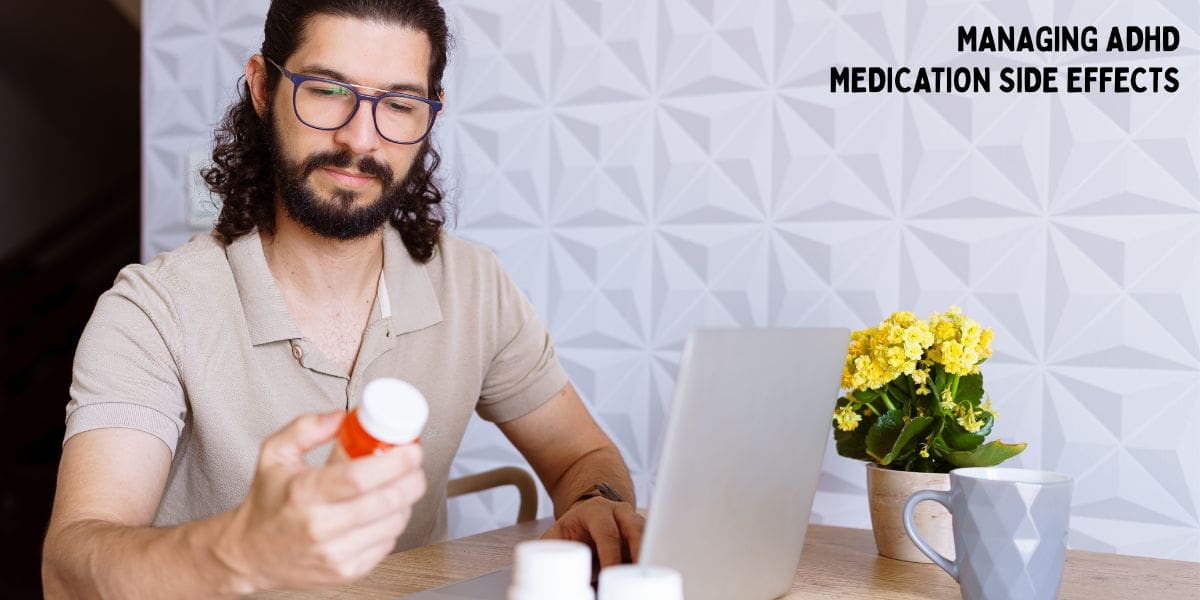
Long-Term Effects of ADHD Medication: What the Research Says
While short-term side effects are well-documented, the long-term effects of ADHD medication are still under active research. Most findings to date are based on systematic reviews and large-scale observational studies, but data on extended use beyond five to ten years remains limited.
What we know so far
Long-term use of stimulant medications such as methylphenidate and amphetamines appears to be safe for many individuals, with continued symptom control and minimal risk of dependence when taken as prescribed. However, the effects of psychostimulant medications on developing brains, especially in young children, are still being studied.
Some reviews suggest that children on long-term medication may experience slightly delayed growth, though the effects are typically small and may reverse once medication is paused or stopped. Emotional development and academic performance often show improvement when symptoms are well-controlled.
What needs more research
There is limited data on how lifelong ADHD medication use affects cardiovascular health, particularly in adults. Most individuals do not experience serious issues, but some may be at increased risk for elevated blood pressure or heart rate over time. Healthcare professionals must continue to monitor these metrics during routine check-ups.
There’s also growing interest in understanding whether long-term stimulant use could affect brain plasticity or sleep cycles. While no conclusive harm has been found, this remains an area for further study.
Monitoring growth and heart health
For children, growth tracking is a standard part of ongoing care. Clinicians monitor height and weight over time and may recommend medication holidays or nutritional adjustments where necessary. For adults, periodic checks of heart rate and blood pressure are advised to detect any changes early.
Managing ADHD Medication Side Effects: Conclusion
Managing ADHD medication side effects in adults and children takes more than willpower. It requires expert guidance, regular follow-up, and a personalised approach. While stimulant prescriptions are among the most common ADHD treatments, they’re not the only option. Some individuals benefit more from non-stimulants or ADHD medication alternatives, especially if side effects disrupt sleep, mood, or daily life.
It’s important to weigh both the benefits and the hidden dangers of ADHD medications, such as appetite suppression or emotional blunting. Understanding how different formulations work helps you make better decisions about ADHD medication for adults or children, especially when transitioning between life stages or managing other health concerns.
No single prescription guarantees long-term ADHD medication effectiveness. It may be time for a review if your current dose leaves you feeling overstimulated, foggy, or flat. Finding the right treatment is a process, and it often starts with the right support.
Whether you’re newly diagnosed or re-evaluating your plan, booking a private ADHD assessment can help fast-track individualised care. You’ll get clarity on next steps, including adjustments to your current prescription or guidance on alternative ADHD treatments.
Take the first step toward a more balanced routine. Book an assessment or speak with an ADHD expert today.
For a full guide to ADHD medications, read our blog: ADHD Medication 101: What to Expect.
You Might Also Like
Contact Us
We’re here to answer any questions you might have.
Get in Touch
Opening Hours
Contact Form
We’re here to help. Reach out and we’ll get back to you within 24 hours (Monday – Friday).

